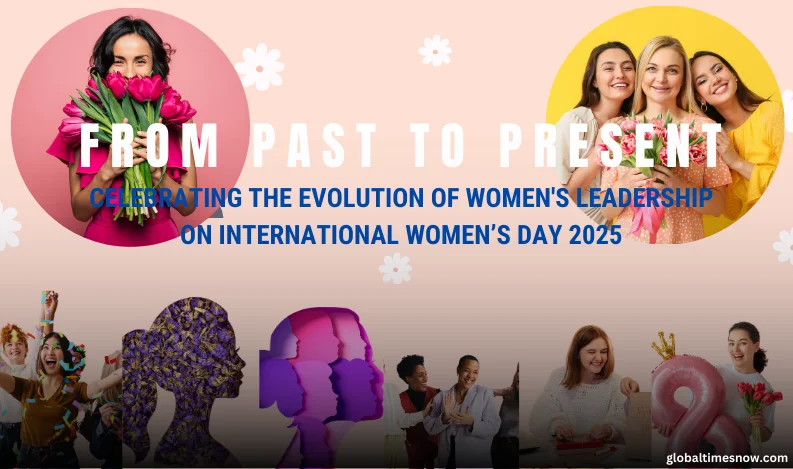Women’s leadership has transformed societies, economies, and politics worldwide. As we celebrate International Women’s Day 2025, it’s essential to reflect on how far we have come, the challenges women leaders have overcome, and the milestones that continue to shape gender equality.
From breaking barriers in male-dominated industries to leading nations and revolutionizing workplaces, women’s leadership has evolved from a struggle for representation to a movement of empowerment and influence. This article explores the past struggles, present achievements, and future possibilities of women in leadership roles globally.
1. The Early Struggles: Women’s Fight for Leadership Rights
1.1 Breaking Barriers in Politics and Governance
Historically, women were excluded from political participation. The suffrage movements of the 19th and early 20th centuries were the first major battles women fought to secure leadership positions.
- 1893: New Zealand became the first country to grant women the right to vote.
- 1920: The United States passed the 19th Amendment, allowing women to vote and participate in government.
- 1960: Sirimavo Bandaranaike of Sri Lanka became the world’s first female Prime Minister, shattering the notion that politics was a male domain.
Despite these victories, women in politics remained underrepresented for decades. They faced discrimination, societal resistance, and limited opportunities to hold office. However, their persistence paved the way for future female leaders.
1.2 Women in Business: Overcoming Economic Exclusion
In the early 1900s, women in business faced significant challenges, including limited access to education, financial independence, and restrictive societal norms.
- 1950s & 60s: Women began entering the workforce in higher numbers, yet leadership roles were scarce.
- 1970s & 80s: The feminist movement pushed for equal employment rights, leading to the first female CEOs and executives in major corporations.
- 1990s & 2000s: More companies implemented gender diversity policies, opening doors for women to reach leadership positions in business.
While progress was slow, these trailblazing women laid the foundation for modern female entrepreneurs and executives who now lead Fortune 500 companies and global enterprises.
2. Present-Day Achievements: Women Leading the Way in 2025
2.1 Women in Politics: A New Era of Leadership
As of 2025, women lead more countries than ever before. Nations across the globe have embraced female leadership, with women serving as Presidents, Prime Ministers, and high-ranking officials.
- Current Statistics:
- Over 35% of world leaders are women.
- Countries with female leadership have seen higher economic growth and social reforms.
- Political quotas have increased the representation of women in parliament.
Notable women leaders in 2025 include:
- Jacinda Ardern (New Zealand) – Leading progressive policies on climate action.
- Sanna Marin (Finland) – Strengthening gender equality in Europe.
- Ngozi Okonjo-Iweala (Nigeria) – Influencing global trade policies as the head of the WTO.
With more women holding powerful positions, there is a shift toward inclusive governance and policy-making that benefits everyone.
2.2 Women in Business: The Rise of Female CEOs and Entrepreneurs
In 2025, women hold executive positions at record levels. The corporate world is witnessing a transformation, with female executives driving innovation and change.
- Top Industries Where Women Thrive Today:
- Technology: Women now lead major AI, cybersecurity, and software development firms.
- Finance: Female CEOs have introduced ethical banking and investment practices.
- Healthcare: Women-led biotech companies are revolutionizing medical research.
Case Study: Indra Nooyi’s Legacy in Business
Indra Nooyi, former CEO of PepsiCo, paved the way for women in business. Under her leadership, she introduced sustainability-driven growth strategies, inspiring many women to pursue executive roles.
Presently, companies are actively closing the gender pay gap and promoting diversity and inclusion in the workplace.
2.3 Women in STEM: Breaking New Ground
The STEM (Science, Technology, Engineering, Mathematics) field, once dominated by men, is now seeing increasing female participation.
-
Key Achievements:
- Women make up 40% of STEM graduates in 2025, compared to 25% a decade ago.
- Female scientists are leading space exploration, AI, and climate change research.
- Governments and private organizations are funding STEM scholarships for women.
-
Dr. Katie Bouman – One of the key figures in capturing the first black hole image.
-
Gitanjali Rao – A young scientist developing AI-based solutions for global challenges.
The rise of women in STEM ensures that future generations will continue innovating and shaping the world.
3. The Future of Women’s Leadership: What Lies Ahead?
3.1 Encouraging More Women to Lead
Despite progress, challenges remain:
- Gender bias in leadership selection.
- Workplace discrimination and pay gaps.
- Limited access to leadership training in some countries.
To bridge these gaps, companies, governments, and organizations must:
- Implement mentorship programs for aspiring female leaders.
- Pass stronger equal pay and anti-discrimination laws.
- Support work-life balance policies to enable women to pursue leadership while raising families.
3.2 The Role of Men in Advancing Gender Equality
Achieving true gender equality requires men to be active allies. Encouraging men to:
- Support women in leadership positions.
- Challenge gender stereotypes at work and home.
- Promote women’s professional growth.
Collaborative leadership will create more diverse and equitable workplaces and governments.
Conclusion: The Legacy and Continuation of Women’s Leadership
From the past struggles for political and economic inclusion to the current wave of female leadership in all sectors, women have made history and continue to shape the future.
As we celebrate International Women’s Day 2025, it’s essential to:
- Recognize and celebrate female pioneers.
- Invest in young women’s education and leadership training.
- Advocate for gender equality in all sectors.
The future of leadership is diverse, inclusive, and equitable—and women are leading the way.
Final Call to Action
- Join the movement. Support women’s leadership by:
- Mentoring young women.
- Advocating for gender-inclusive policies.
- Celebrating and amplifying women’s achievements.
Women’s leadership has evolved from a struggle to a movement and now to a reality. Let’s continue to build a world where women lead without barriers.
You may also like:-














